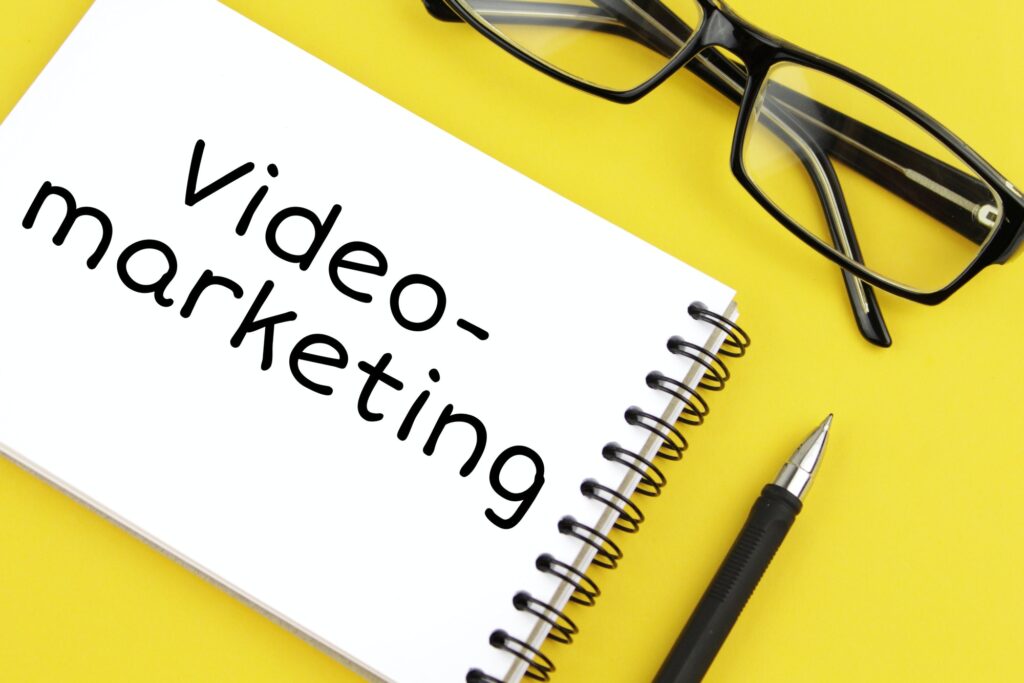Video marketing is a dynamic and powerful tool that businesses can utilize to enhance their brand visibility, engage with their audience, and drive sales. It involves the incorporation of videos into marketing campaigns to promote a product, service, or company.
This guide will provide an overview of how to use video in marketing, covering aspects such as creating compelling content, optimizing for SEO, leveraging social media platforms, and analyzing performance metrics.
Whether you’re a small business owner or a marketing professional in a large corporation, understanding how to effectively use video in your marketing strategy can significantly boost your business growth. Contact us for more information about this topic.
Maximizing Engagement: How to Use Video in Marketing
In the dynamic world of marketing, it’s crucial to stay ahead of the curve and utilize the most effective strategies to engage your audience. One such strategy that has proven to be a game-changer is the use of video in marketing. With its ability to convey a wealth of information in a short span of time, video has become an indispensable tool for marketers worldwide.
Now, you might be wondering, why video? Well, the answer lies in its inherent ability to captivate and engage. In an era where attention spans are dwindling, video content stands out as it is both visually stimulating and easy to digest. It’s no surprise then that according to a report by HubSpot, 54% of consumers want to see more video content from a brand or business they support.
But it’s not just about creating any video content; it’s about creating content that resonates with your audience and prompts them to take action. This is where the art of storytelling comes into play. A well-crafted video that tells a compelling story can evoke emotions, build trust, and ultimately drive conversions.
So, how can you leverage video to maximize engagement? First and foremost, it’s essential to understand your audience. What are their interests? What problems are they facing? What kind of content do they consume? Once you have a clear understanding of your audience, you can create video content that speaks directly to them.
Next, focus on the quality of your video. While it’s true that content is king, poor video quality can distract your audience and detract from your message. Invest in good equipment or hire professionals to ensure your video is crisp, clear, and professional.
Moreover, don’t forget about the power of social media. Platforms like Facebook, Instagram, and YouTube are perfect for sharing your video content and reaching a wider audience. Make sure to optimize your videos for each platform, taking into account factors like video length, format, and the use of captions.
Now, let’s talk about the content of your video. As mentioned earlier, storytelling is key. But, it’s also important to provide value to your audience. This could be in the form of educational content, product demonstrations, or even behind-the-scenes footage. The goal is to create content that not only entertains but also educates and inspires.
Lastly, don’t forget to include a clear call-to-action (CTA) in your video. Whether it’s visiting your website, signing up for a newsletter, or purchasing a product, a strong CTA can guide your audience towards the desired action and increase conversion rates.
In conclusion, video marketing is a powerful tool that can significantly enhance your marketing efforts. By understanding your audience, focusing on quality, leveraging social media, providing valuable content, and including a strong CTA, you can maximize engagement and drive results. So, why not give it a shot? After all, in the words of Dr. James McQuivey, a single minute of video content is worth 1.8 million words!
The Power of Visual Storytelling: Using Video in Marketing
In the dynamic world of marketing, the power of visual storytelling cannot be overstated. The use of video in marketing is a game-changer, a potent tool that has revolutionized the way businesses communicate with their audience. It’s a medium that combines auditory and visual stimuli to create a compelling narrative that can captivate, engage, and influence viewers like no other.
The beauty of video marketing lies in its versatility. It can be used to introduce a new product, explain a complex concept, share customer testimonials, or even give a behind-the-scenes look at your company. The possibilities are endless. But why is video such a powerful tool in marketing? The answer lies in the way our brains process information.
Research shows that the human brain processes visuals 60,000 times faster than text. This means that a video can convey a message much more quickly and effectively than a written article or a static image. Moreover, videos are more engaging and memorable. According to a study by HubSpot, 80% of customers remember a video they’ve watched in the last month. This is a testament to the power of visual storytelling and its ability to leave a lasting impression on viewers.
But the benefits of video marketing don’t stop there. Videos can also significantly boost your online presence. Search engines love videos. Including a video on your website can increase the chance of a front-page Google result by 53 times. Furthermore, videos are highly shareable. They can easily be shared across various social media platforms, increasing your reach and visibility.
Now, you might be thinking, “That’s all well and good, but how do I use video in my marketing strategy?” The first step is to identify your goals. What do you want to achieve with your video? Do you want to increase brand awareness, generate leads, or boost sales? Once you have a clear goal in mind, you can start planning your video.
Next, consider your audience. Who are they? What are their interests and needs? Your video should be tailored to your audience and provide value to them. It should be engaging, informative, and relevant. Remember, the goal is not just to sell your product or service, but to tell a story that resonates with your audience.
Once you have your goals and audience in mind, it’s time to create your video. This doesn’t necessarily mean you need a big budget or fancy equipment. In fact, authenticity often trumps production value. Your audience wants to see the real you, not a polished, corporate version. So, don’t be afraid to show your personality and let your passion shine through.
Finally, don’t forget to measure the success of your video. Use analytics to track views, shares, likes, and comments. This will give you valuable insights into what’s working and what’s not, allowing you to refine your strategy and improve your results.
In conclusion, the power of visual storytelling through video is undeniable. It’s a versatile, engaging, and effective tool that can significantly enhance your marketing efforts. So, why not give it a try? You might be surprised by the results.
How to Boost Your Marketing Strategy with Video Content
In the dynamic world of marketing, it’s essential to stay ahead of the curve and leverage the most effective strategies to reach your audience. One such strategy that has proven to be a game-changer is the use of video content. With its ability to engage, entertain, and educate, video content has become a powerful tool in the marketer’s arsenal.
Firstly, let’s consider the sheer popularity of video content. According to a recent study by HubSpot, 54% of consumers want to see more video content from a brand or business they support. This statistic alone should be enough to convince you of the potential that video content holds. But if you’re still not convinced, let’s delve a little deeper into why video content is so effective.
Video content is incredibly versatile. It can be used to demonstrate a product, explain a complex concept, share customer testimonials, or even give a behind-the-scenes look at your business. This versatility means that you can use video content to achieve a wide range of marketing goals, from increasing brand awareness to driving sales.
Moreover, video content is highly engaging. In an age where attention spans are shorter than ever, capturing and holding your audience’s attention is crucial. Video content can do just that. With its combination of visuals, sound, and movement, video content is inherently more engaging than static text or images. It can draw in your audience and keep them hooked, increasing the chances that they’ll remember your message and take action.
But perhaps the most compelling argument for using video content in your marketing strategy is its potential to boost your SEO. Search engines love video content. Including video on your website can help improve your search engine rankings, making it easier for potential customers to find you. Plus, video content is highly shareable, which can help increase your reach and visibility online.
Now, you might be thinking, “That all sounds great, but how do I actually use video content in my marketing strategy?” Well, the good news is, it’s easier than you might think. You don’t need a big budget or a professional film crew to create effective video content. With a little creativity and some basic equipment, you can start creating videos that resonate with your audience.
Start by identifying what kind of video content would be most valuable to your audience. Do they want educational how-to videos? Entertaining behind-the-scenes footage? Inspiring customer testimonials? Once you’ve identified what your audience wants, you can start creating content that meets their needs.
Next, consider the platforms where you’ll share your video content. Different platforms have different strengths and weaknesses, so it’s important to choose the right ones for your goals. For example, if you’re trying to reach a younger audience, platforms like TikTok or Instagram might be a good fit. If you’re targeting a professional audience, LinkedIn could be a better choice.
Finally, remember that creating video content is just the first step. To truly boost your marketing strategy with video content, you need to promote your videos effectively. This might involve sharing them on social media, embedding them on your website, or including them in your email marketing campaigns.
In conclusion, video content is a powerful tool that can help you boost your marketing strategy. With its versatility, engagement potential, and SEO benefits, video content is well worth the investment. So why not give it a try? You might just find that it’s the game-changer your marketing strategy needs.

Incorporating Video into Your Social Media Marketing
In the dynamic world of digital marketing, the use of video content has become an essential tool for businesses to engage with their audience. It’s no longer a question of whether to incorporate video into your social media marketing strategy, but rather how to do it effectively. The power of video lies in its ability to capture attention, convey information quickly, and create an emotional connection with viewers.
Firstly, let’s consider the attention-grabbing potential of video content. In the fast-paced, information-saturated environment of social media, standing out from the crowd is a challenge. However, video content, with its combination of visual and auditory stimuli, has a unique ability to stop users in their tracks. It’s like a bright, shiny object in a sea of text and static images. It’s hard to ignore, and that’s exactly what you want in a marketing tool.
Moreover, video content is an efficient way to convey information. In a world where time is a precious commodity, people appreciate content that is quick and easy to digest. A well-crafted video can deliver a message or explain a concept in a fraction of the time it would take to read a lengthy article. This efficiency is not only beneficial for the viewer but also for the marketer. It allows you to communicate your message to your audience before they lose interest and move on to the next piece of content.
But perhaps the most compelling argument for using video in social media marketing is its ability to create an emotional connection with viewers. Video content can tell a story, evoke emotions, and create a sense of intimacy that is difficult to achieve with other types of content. This emotional connection can be a powerful driver of consumer behavior, influencing decisions and fostering brand loyalty.
So, how can you incorporate video into your social media marketing strategy? There are several approaches you can take. One popular method is to create short, engaging videos that can be shared on platforms like Instagram and Facebook. These videos can showcase your products, demonstrate how they work, or tell a story about your brand.
Another approach is to use live video streaming, which is available on platforms like Facebook and Instagram. Live videos offer a unique opportunity to interact with your audience in real time, answer their questions, and give them a behind-the-scenes look at your business.
You can also use video content to enhance your existing social media posts. For example, instead of simply posting a photo of a new product, why not create a short video that shows the product in action? This can make your posts more engaging and informative, increasing the likelihood that your audience will share them with their own followers.
In conclusion, incorporating video into your social media marketing strategy is not just a trend, but a necessity in today’s digital landscape. It’s a powerful tool that can help you capture attention, convey information quickly, and create an emotional connection with your audience. So, why not give it a try? You might be surprised at the impact it can have on your marketing efforts.

The Role of Video in Content Marketing: A Comprehensive Guide
In the dynamic world of digital marketing, the role of video content is becoming increasingly significant. It’s no longer just an add-on or an afterthought. Instead, it’s a powerful tool that can drive engagement, boost conversions, and build brand loyalty. This comprehensive guide will delve into the importance of video in content marketing and how to effectively use it to your advantage.
The rise of video content in marketing is not surprising. With the advent of social media platforms like YouTube, Instagram, and Facebook, video has become the most consumed form of content. It’s engaging, it’s shareable, and most importantly, it’s memorable. In fact, according to a study by HubSpot, 54% of consumers want to see more video content from a brand or business they support. This clearly indicates that video is not just a passing trend, but a fundamental part of content marketing that businesses cannot afford to ignore.
So, why is video such a game-changer in content marketing? The answer lies in its ability to convey a message in a way that’s both entertaining and easy to digest. Unlike text-based content, video can tell a story in a matter of seconds or minutes, capturing the viewer’s attention and making a lasting impression. It’s a medium that appeals to the senses, creating a more immersive and emotional experience for the viewer. This, in turn, can lead to higher engagement rates, increased brand awareness, and ultimately, more conversions.
But how can businesses effectively use video in their content marketing strategy? The first step is to understand your audience. What type of content do they enjoy? What are their interests and preferences? Once you have a clear understanding of your audience, you can create video content that resonates with them. This could be anything from product demonstrations and how-to videos to customer testimonials and behind-the-scenes footage. The key is to create content that is not only informative but also entertaining and engaging.
Next, it’s important to optimize your video content for SEO. This means using relevant keywords in your video title, description, and tags. It also means creating high-quality thumbnails and using closed captions or subtitles to make your video more accessible. By optimizing your video content for SEO, you can increase its visibility on search engines and attract more viewers.
Finally, don’t forget to promote your video content. Share it on your social media channels, embed it on your website, or include it in your email newsletters. The more you promote your video, the more exposure it will get, and the more likely it is to be shared by your audience.
In conclusion, video is a powerful tool in content marketing that can help businesses connect with their audience on a deeper level. It’s engaging, it’s memorable, and it’s effective. By understanding your audience, creating engaging content, optimizing for SEO, and promoting your video, you can leverage the power of video to boost your marketing efforts and achieve your business goals. So, why not give it a try? After all, the future of content marketing is video!
How to Use Video Marketing to Increase Website Traffic
In the digital age, video marketing has emerged as a powerful tool for businesses to increase website traffic, engage with their audience, and boost sales. It’s no secret that people are consuming more video content than ever before. From social media platforms to company websites, videos are everywhere, and for a good reason. They are engaging, easy to digest, and can convey a lot of information in a short amount of time. But how exactly can you leverage video marketing to increase website traffic? Let’s dive in!
Firstly, it’s important to understand that video content is not just about creating a visually appealing piece. It’s about telling a story that resonates with your audience and compels them to take action. This could be visiting your website, signing up for a newsletter, or making a purchase. Therefore, the first step in using video marketing to increase website traffic is to create compelling content that your audience will find valuable. This could be a product demonstration, a how-to guide, or even a behind-the-scenes look at your company. The key is to make it relevant and interesting to your target audience.
Once you have your video content, it’s time to optimize it for search engines. Just like written content, videos can be optimized for SEO to increase their visibility on search engine results pages. This involves using relevant keywords in your video title, description, and tags. Additionally, you can also include a transcript of your video to make it more accessible and SEO-friendly. By optimizing your video content for SEO, you can increase its visibility and drive more traffic to your website.
But the journey doesn’t end there. Once you’ve created and optimized your video content, it’s time to promote it. There are numerous ways to do this, but one of the most effective is through social media. By sharing your video content on platforms like Facebook, Twitter, and Instagram, you can reach a wider audience and drive more traffic to your website. Additionally, you can also use email marketing to share your video content with your subscribers. This not only increases the visibility of your video content but also encourages your subscribers to visit your website.
Lastly, don’t forget to monitor the performance of your video content. This will help you understand what’s working and what’s not, allowing you to make necessary adjustments to your video marketing strategy. You can use tools like Google Analytics to track the traffic coming to your website from your video content. This will give you insights into your audience’s behavior and preferences, helping you create more effective video content in the future.
In conclusion, video marketing is a powerful tool that can significantly increase website traffic. By creating compelling content, optimizing it for SEO, promoting it on social media, and monitoring its performance, you can leverage video marketing to drive more traffic to your website and boost your business. So, why wait? Start using video in your marketing strategy today and watch your website traffic soar!
Leveraging Video for Email Marketing Success
In the dynamic world of digital marketing, the use of video has emerged as a powerful tool to engage audiences and drive business growth. Particularly, when it comes to email marketing, integrating video content can significantly enhance the effectiveness of your campaigns. Now, you might be wondering, how exactly can video be leveraged for email marketing success? Well, let’s dive right into it!
Firstly, it’s important to understand why video is such a game-changer. In today’s fast-paced digital landscape, consumers are constantly bombarded with information. Amidst this information overload, video stands out as a medium that is both engaging and easy to digest. It’s no wonder that a report by HubSpot revealed that 54% of consumers want to see more video content from brands they support.
Now, imagine combining the power of video with the direct, personalized approach of email marketing. The result? A potent mix that can significantly boost your engagement rates. In fact, according to a study by Syndacast, simply including the word ‘video’ in an email subject line can increase open rates by 19% and click-through rates by 65%.
But how do you go about integrating video into your email marketing strategy? One effective approach is to use video to provide value to your subscribers. This could be in the form of how-to videos, product demonstrations, customer testimonials, or behind-the-scenes footage. By offering valuable content, you not only keep your subscribers engaged but also build trust and credibility for your brand.
Another strategy is to use video to create a sense of urgency or exclusivity. For instance, you could send out an email with a limited-time video offer or an exclusive sneak peek of a new product. This not only piques the interest of your subscribers but also encourages them to take immediate action.
However, while video can undoubtedly enhance your email marketing efforts, it’s crucial to remember that not all videos are created equal. The quality of your video content can make or break your campaign. Therefore, it’s essential to invest in high-quality video production and ensure that your videos are not only visually appealing but also relevant and engaging.
Moreover, it’s important to keep your videos short and sweet. In today’s fast-paced world, attention spans are shorter than ever. Therefore, your videos should be concise and to the point, delivering your message in the most efficient way possible.
Lastly, don’t forget to include a clear call-to-action in your videos. Whether it’s to visit your website, make a purchase, or sign up for a webinar, a compelling call-to-action can significantly increase your conversion rates.
In conclusion, integrating video into your email marketing strategy can be a powerful way to engage your audience, boost your open and click-through rates, and ultimately drive business growth. However, it’s important to remember that the success of your video marketing efforts largely depends on the quality of your content and the relevance of your message. So, go ahead and start leveraging video for your email marketing success. You might just be surprised at the results!
The Impact of Video Marketing on Brand Awareness
In the dynamic world of marketing, the use of video has emerged as a powerful tool to enhance brand awareness. The impact of video marketing on brand awareness is undeniable, and it’s time we delve into the reasons why.
Firstly, let’s consider the sheer reach of video content. With the advent of social media platforms like YouTube, Facebook, and Instagram, videos have become a ubiquitous part of our daily digital diet. These platforms have billions of users worldwide, providing an enormous audience for brands to tap into. By creating engaging and shareable video content, brands can reach a wider audience, thereby increasing their visibility and brand awareness.
Moreover, videos have a unique ability to convey a brand’s personality and values in a way that text or images alone cannot. They allow brands to tell their story in a more engaging and immersive way. This storytelling aspect of videos can evoke emotions in viewers, creating a deeper connection between them and the brand. When viewers feel emotionally connected to a brand, they are more likely to remember it, thus enhancing brand awareness.
Another compelling argument for the use of video in marketing is its ability to improve SEO rankings. Search engines like Google prioritize websites with video content, making them more likely to appear on the first page of search results. This increased visibility can significantly boost brand awareness. Additionally, videos tend to keep visitors on a website for longer periods, which can also improve SEO rankings.
Furthermore, videos are highly versatile and can be used in various marketing strategies. They can be used for product demonstrations, customer testimonials, behind-the-scenes looks, educational content, and much more. This versatility allows brands to consistently produce fresh and engaging content, keeping their audience interested and their brand top of mind.
The impact of video marketing on brand awareness is also evident in its ability to increase social engagement. Videos are more likely to be shared, liked, and commented on compared to other types of content. This increased engagement can lead to a wider reach and more exposure for the brand.
Lastly, let’s not forget the power of video in driving conversions. According to a study by Wyzowl, 84% of people say that they’ve been convinced to buy a product or service by watching a brand’s video. This shows that not only can video enhance brand awareness, but it can also directly impact a brand’s bottom line.
In conclusion, the use of video in marketing can significantly enhance brand awareness. Its wide reach, storytelling capabilities, SEO benefits, versatility, social engagement, and conversion power make it an indispensable tool in any marketer’s arsenal. So, if you’re not already using video in your marketing strategy, it’s high time you start. After all, in the words of the famous marketer Seth Godin, “Marketing is no longer about the stuff that you make, but about the stories you tell.” And what better way to tell your brand’s story than through video?
How to Use Video SEO to Improve Your Marketing Strategy
In the digital age, video has emerged as a powerful tool for marketing. It’s no longer just an option; it’s a necessity for businesses that want to stay competitive. But it’s not enough to just create a video and hope for the best. To truly harness the power of video marketing, you need to understand and implement video SEO.
Video SEO, or search engine optimization, is the process of optimizing your videos to be found and ranked by search engines. It’s a crucial part of your marketing strategy because it helps your videos reach a wider audience. When your videos are easily discoverable, they can drive more traffic to your website, increase brand awareness, and ultimately, boost sales.
So, how do you use video SEO to improve your marketing strategy? The first step is to create high-quality, engaging videos. Search engines prioritize content that provides value to users. Therefore, your videos should be informative, entertaining, and relevant to your target audience.
Next, you need to optimize your video titles and descriptions. These elements play a significant role in how search engines index and rank your videos. Use keywords that your audience is likely to search for, but avoid keyword stuffing. The title should be catchy and compelling, while the description should provide a clear and concise summary of the video content.
Don’t forget about video tags. These are keywords that describe what your video is about. They help search engines understand the content of your video and can improve its visibility in search results. Again, choose tags that are relevant to your video and your target audience.
Another important aspect of video SEO is the video transcript. Transcripts make your videos accessible to a wider audience, including people who are deaf or hard of hearing. But they also provide additional content for search engines to index. This can improve your video’s search ranking and visibility.
You should also consider hosting your videos on your own website, in addition to platforms like YouTube. This can drive more traffic to your site and increase the time visitors spend there, which can boost your search engine rankings.
Finally, encourage viewers to engage with your videos. Comments, likes, shares, and other forms of engagement can signal to search engines that your video is valuable and relevant. This can further improve your video’s visibility in search results.
In conclusion, video SEO is a powerful tool that can significantly enhance your marketing strategy. By creating high-quality videos and optimizing them for search engines, you can reach a wider audience, increase brand awareness, and drive more traffic to your website. So, don’t just create videos; optimize them. Your bottom line will thank you.
Remember, the world of digital marketing is constantly evolving. What works today may not work tomorrow. So, stay informed, be adaptable, and always strive to improve. With the right approach and a bit of creativity, you can use video SEO to take your marketing strategy to new heights. And who knows? Your next video might just go viral.
The Benefits of Using Video in Influencer Marketing
In the dynamic world of marketing, it’s essential to stay ahead of the curve and embrace the latest trends. One such trend that has taken the marketing world by storm is the use of video in influencer marketing. It’s not just a passing fad; it’s a powerful tool that can significantly boost your brand’s visibility and engagement.
Firstly, let’s consider the sheer popularity of video content. With the rise of platforms like YouTube, TikTok, and Instagram, video has become the preferred medium for many internet users. It’s engaging, it’s easy to consume, and it’s shareable. In fact, according to a study by HubSpot, 54% of consumers want to see more video content from a brand or business they support. So, if you’re not using video in your influencer marketing strategy, you’re missing out on a golden opportunity to connect with your audience.
But it’s not just about meeting consumer demand. Video content also allows for a deeper, more personal connection between the influencer and their followers. It gives influencers the chance to show their personality, share their experiences, and engage with their audience in a way that static images or text simply can’t. This authenticity is key in influencer marketing, as consumers are more likely to trust and engage with content that feels genuine and relatable.
Moreover, video content is incredibly versatile. Whether it’s a product review, a tutorial, a behind-the-scenes look, or a Q&A session, there are countless ways for influencers to incorporate your brand into their video content. This versatility not only keeps the content fresh and engaging, but it also allows for a more seamless integration of your brand, making the promotion feel less like an advertisement and more like a natural part of the influencer’s content.
Another significant benefit of using video in influencer marketing is its potential for virality. Videos are more likely to be shared than any other type of content, which means they have the potential to reach a much larger audience. A single video can be shared across multiple platforms, increasing your brand’s visibility and potentially attracting new followers.
Furthermore, video content is measurable. With the right tools, you can track views, shares, likes, comments, and even how long people are watching your videos. This data can provide valuable insights into what’s working and what’s not, allowing you to refine your strategy and maximize your return on investment.
Lastly, let’s not forget the SEO benefits of video content. Search engines love video, and including it on your website or blog can significantly improve your search engine ranking. This means more visibility for your brand, more traffic to your site, and ultimately, more potential customers.
In conclusion, the benefits of using video in influencer marketing are clear. It’s engaging, versatile, shareable, measurable, and SEO-friendly. It allows for a deeper connection with the audience and has the potential to significantly boost your brand’s visibility and engagement. So, if you’re not already using video in your influencer marketing strategy, it’s high time you started. After all, in the fast-paced world of marketing, those who fail to adapt are left behind. So, embrace the power of video and watch your brand soar to new heights.
Creating Effective Video Ads for Your Marketing Campaigns
In the dynamic world of marketing, the use of video has emerged as a powerful tool to engage audiences and promote products or services. The rise of digital platforms has made video marketing more accessible and effective than ever before. However, creating effective video ads for your marketing campaigns is not as simple as pointing a camera and pressing record. It requires a strategic approach, creativity, and an understanding of your audience’s needs and preferences.
Firstly, let’s consider the power of video in marketing. Video content is engaging, memorable, and more likely to be shared than other types of content. It can convey complex information in a digestible format, making it an excellent tool for explaining products, services, or concepts. Moreover, video content can evoke emotions, creating a stronger connection between your brand and your audience.
However, the effectiveness of video marketing hinges on the quality of the video ads. Poorly produced or irrelevant video content can do more harm than good, turning off potential customers and damaging your brand’s reputation. Therefore, it’s crucial to invest time and resources into creating high-quality video ads that resonate with your audience.
Creating effective video ads starts with a clear understanding of your target audience. Who are they? What are their interests, needs, and pain points? What type of content do they consume and on which platforms? These insights will guide the content, tone, and style of your video ads, ensuring they are relevant and appealing to your audience.
Next, you need to define the purpose of your video ad. Are you trying to raise brand awareness, promote a new product, or drive traffic to your website? Your objective will shape the message and call-to-action in your video ad. Remember, your video ad should not just be about selling; it should provide value to your audience, whether that’s in the form of information, entertainment, or inspiration.
Once you have a clear understanding of your audience and objective, it’s time to get creative. Storytelling is a powerful technique in video marketing. A compelling story can captivate your audience, evoke emotions, and make your brand more memorable. Use visuals, sounds, and narratives to tell a story that aligns with your brand and resonates with your audience.
In addition to storytelling, consider using humor, surprise, or other emotional triggers to engage your audience. However, be careful not to overdo it. Your video ad should still be professional and align with your brand image.
Finally, don’t forget about the technical aspects of video production. Good lighting, clear audio, and high-quality visuals are essential for creating a professional and engaging video ad. Also, consider the length of your video ad. While there’s no one-size-fits-all answer, research suggests that shorter videos tend to perform better, especially on social media platforms.
In conclusion, video is a powerful tool in marketing, but its effectiveness depends on the quality of your video ads. By understanding your audience, defining your objective, getting creative, and paying attention to technical details, you can create effective video ads that engage your audience and drive your marketing campaigns to success. So, grab your camera, unleash your creativity, and start creating video ads that resonate with your audience and align with your brand.
Conclusion
In conclusion, using video in marketing is a powerful tool for businesses to engage with their audience, convey their message effectively and boost their sales. It involves creating high-quality and relevant content that resonates with the target audience, optimizing the video for SEO, promoting it on various platforms, and analyzing its performance for future improvements. Video marketing can significantly enhance brand visibility, customer engagement, and conversion rates, making it a crucial component of a successful marketing strategy.





